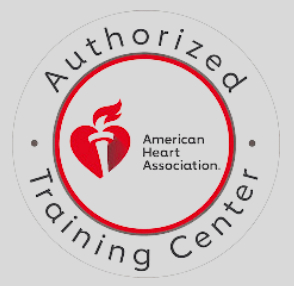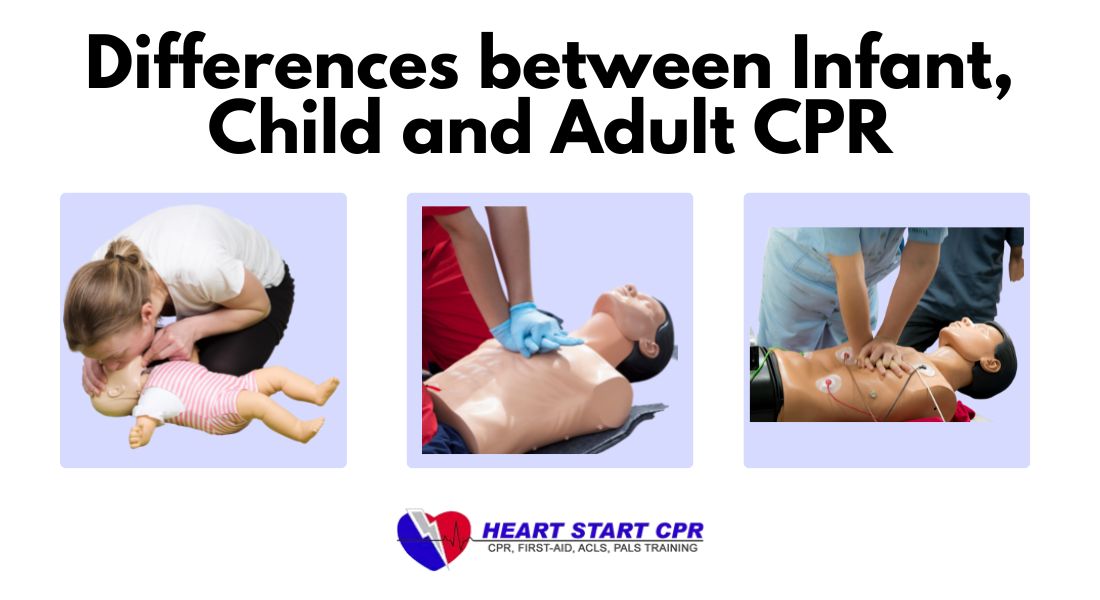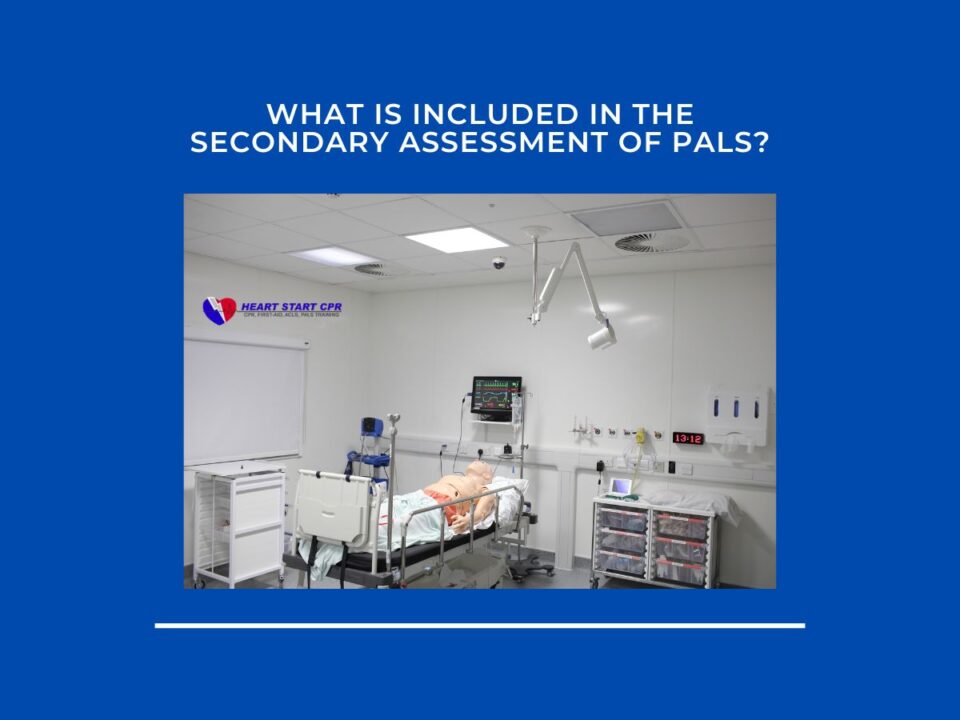
PALS: Understanding the Basic & Everything You Need To Know
January 24, 2023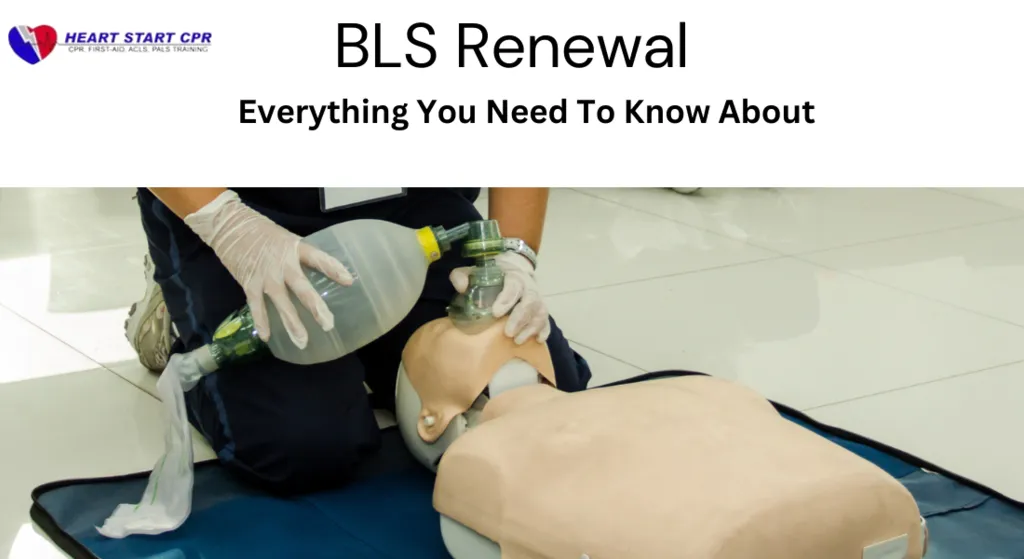
How to Renew BLS Certification?
January 26, 2023Cardiopulmonary resuscitation (CPR) is a crucial skill that can save a person's life in an emergency. Mastering CPR techniques for adults, infants, and children is essential as the anatomy and physiology of each age group are different and require specific CPR techniques. This guide will comprehensively understand the best CPR techniques for adults, infants, and children. We will also highlight the key differences between adult, infant, and child CPR and how to determine the appropriate CPR technique for different age groups. Understanding the proper CPR techniques for each age group can save lives in an emergency. Learn the most effective CPR techniques, from chest compressions to rescue breaths, and become CPR certified today. Improve your CPR knowledge now and learn how to perform CPR and prepare to save lives with our guide on mastering CPR techniques for adults, infants, and children.
Techniques for performing CPR on Adults
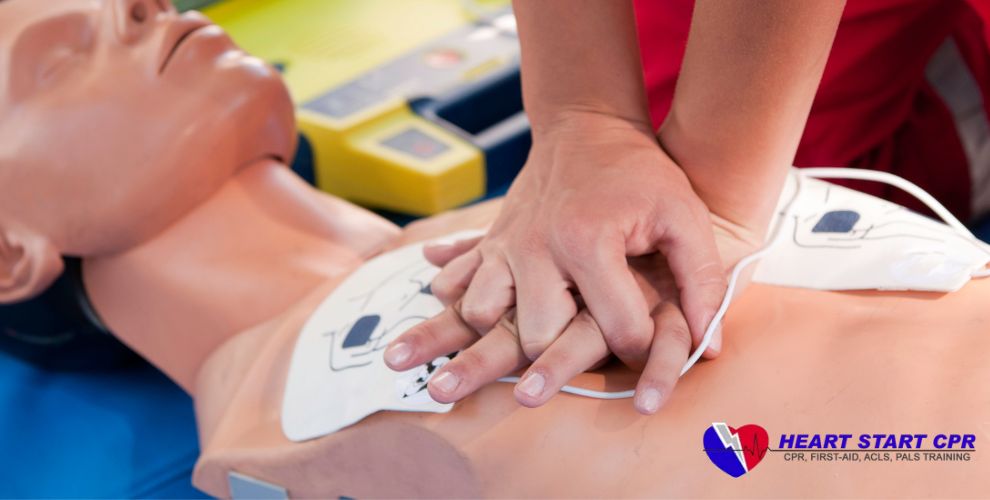
It's important to note that the adult CPR technique differs from infant and child CPR; the ratio of chest compression to rescue breath is 30:2, and the chest compression depth is 5 cm. It's also essential to have a CPR certification and to update it regularly to perform the technique effectively. When performing CPR on an adult, the following steps should be followed:
- Check if the victim is responsive: Ask the person if they are okay by tapping on their shoulder. You need to immediately call the Emergency Medical Service(EMS) if the person is not responding.
- Check for breathing: Look for chest movement and listen for breath sounds. You need to start CPR immediately if the person is not breathing.
- Position the person on their back: Place the person on a firm surface, such as a floor or a table.
- Begin chest compressions: Kneel beside the person and place the heel of one hand on the centre of the person's chest (on the breastbone). Interlock the fingers of both hands and place the heel of the second hand on top of the first. Press down firmly, compressing the chest about 2 inches (5 centimetres) for adults.
- Give rescue breaths: Give rescue breaths by pinching the victim's nose shut and inhaling twice through their mouth. The chest should lift with each breath, which should last about a second.
- Continue CPR: Alternate 30 chest compressions with 2 rescue breaths. Continue CPR until the person begins to breathe independently, an AED (Automated External Defibrillator) is available, or until emergency medical services arrive
Techniques for performing CPR on a Child
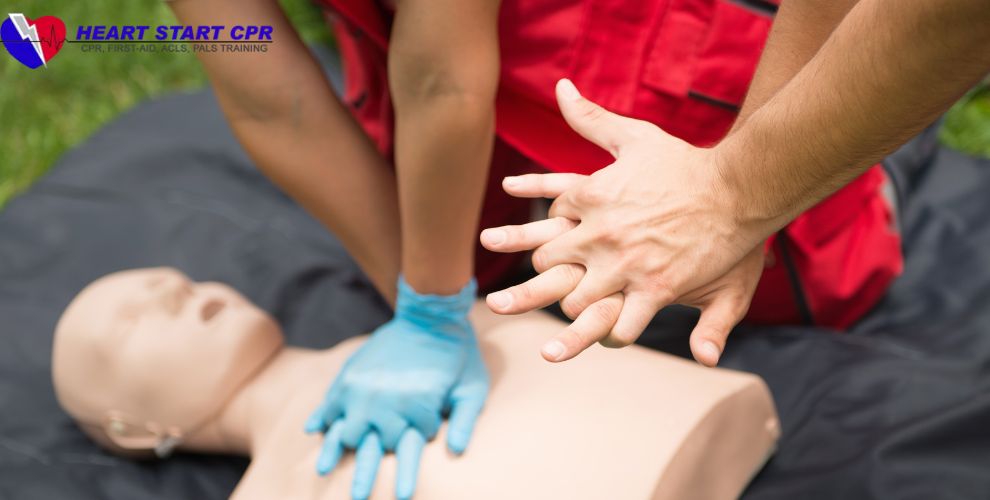
The child CPR technique differs from adult and infant CPR; the ratio of chest compression to rescue breath is 30:2, and the chest compression depth is 4 cm. When performing CPR on a child, the following steps should be followed:
- Check for responsiveness: Tap the child's shoulder and shout, "Are you okay?" Call Emergency Medical Service(EMS) if the child is not speaking.
- Check for breathing: Look for chest movement and listen for breath sounds.CPR needs to be performed if the child is not breathing.
- Position the child on their back: Place the child on a firm surface, such as a floor or a table.
- Begin chest compressions: Kneel beside the child and place the heel of one hand on the centre of the child's chest (on the breastbone). Interlock the fingers of both hands and place the heel of the second hand on top of the first. Press down firmly, compressing the chest about 1 1/2 inches (4 centimeters) for children.
- Give rescue breaths: Pinch the child's nose shut, and give one breath into the child's mouth. Each breath must last about a second and make the chest rise.
- Continue CPR: Alternate 30 chest compressions with 2 rescue breaths. Continue CPR until the child begins to breathe independently, an AED (Automated External Defibrillator) is available, or until emergency medical services arrive.
Related Post: Proper Procedure for Delivering Rescue Breaths to an 8-year-Old Child
Techniques for performing CPR on Infant
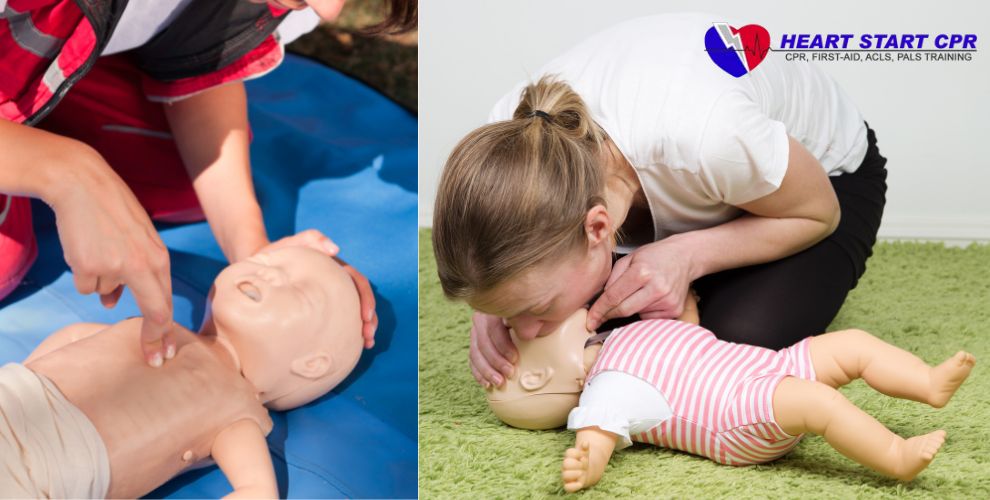
The infant CPR technique differs from adult and child CPR. The ratio of chest compression to rescue breath is 30:2, and the depth of chest compression is 1.5cm. When performing CPR on an infant, the following steps should be followed:
- Check for responsiveness: Tap the infant's foot and watch for a reaction. Call emergency medical services (EMS) immediately if the infant does not respond.
- Check for breathing: Look for chest movement and listen for breath sounds. Start CPR if the infant is not breathing.
- Position the infant on its back: Place the infant on a firm surface, such as a floor or a table.
- Begin chest compressions: Place two fingers on the center of the infant's chest (on the breastbone) and press down firmly, compressing the chest about 1/2 inch (1.25 centimeters) for infants.
- Give rescue breaths: Pinch the infant's nose shut and breathe into the infant's mouth, ensuring the chest rises. Each breath should last about 1 second.
- Continue CPR: Alternate 30 chest compressions with 2 rescue breaths. Continue CPR until the infant begins to breathe independently, an AED (Automated External Defibrillator) is available, or until emergency medical services arrive.
You also need to learn about the breaking of ribs during CPR to minimize the further casualties.
How to determine the appropriate CPR technique for different age groups?
The appropriate CPR technique for different age groups is determined by the age and size of the person needing CPR. For infants, CPR is performed using only two fingers in the center of the chest and giving 30 compressions at a rate of at least 100-120 per minute. For children and adults, CPR is performed using the heel of one hand in the center of the chest and giving 30 compressions at a rate of at least 100-120 per minute. Checking for a pulse and breathing before starting CPR is also important.
The CPR techniques and AED usage can be learned from CPR and First Aid training classes.
The importance of CPR certification for all age groups
CPR certification is important for all age groups because it provides individuals with the knowledge and skills to save a life in an emergency. It's important to note that CPR certification is not a one-time thing. It's important to renew it regularly to stay updated with the latest techniques and guidelines. Some of the key reasons why CPR certification is important include:
Knowledge of proper technique
CPR certification courses teach individuals the appropriate method for CPR on adults, infants, and children. This includes the correct depth and rate of chest compressions and the proper number and technique for rescue breaths, including mouth-to-mouth rescue breaths.
Familiarity with equipment
CPR certification courses also teach individuals how to use equipment such as AEDs (automated external defibrillators) and bag-valve masks, which can be used to revive someone who has stopped breathing or whose heart has stopped beating.
Confidence in an emergency: Knowing how to perform CPR properly can give individuals the confidence to take action in an emergency rather than feeling helpless or unsure of what to do.
Legal Requirements
Some jobs and professions, such as healthcare professionals, teachers, and daycare providers, may require CPR certification as part of their job requirements.
Save a life
Ultimately, the most important reason to get CPR certified is to save a life in an emergency. Every second counts in a cardiac arrest, and having someone nearby who is trained in CPR can make all the difference.
CPR certifications at Heart Start CPR
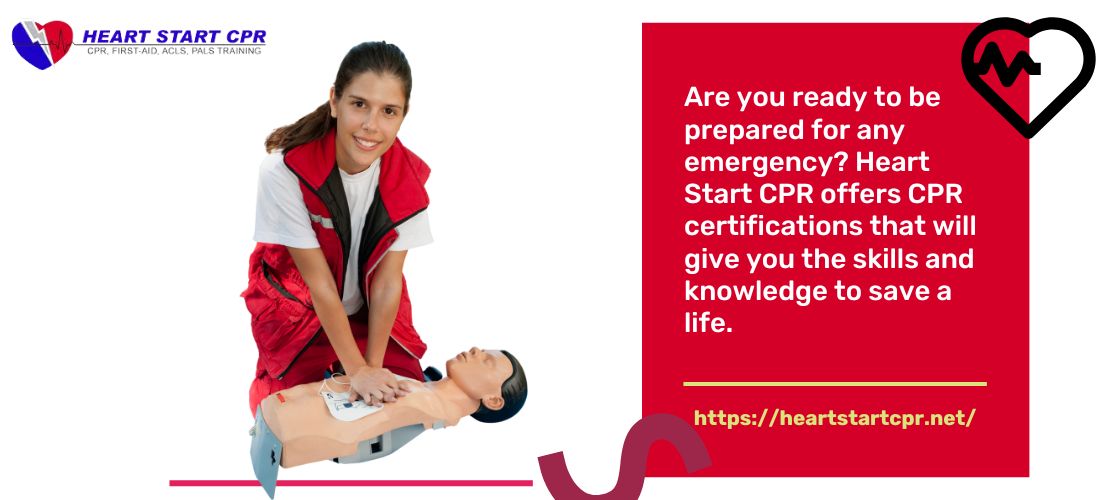
Are you ready to be prepared for any emergency? Heart Start CPR offers CPR certifications that will give you the skills and knowledge to save a life. Our certified instructors provide hands-on training in a comfortable and interactive environment. Don't let a lack of preparedness be why someone doesn't make it. Sign up for one of our CPR certification classes today and give yourself peace of mind. Please don't wait any longer. Click now to see our schedule and enroll in the class near you. You could be the one to make a difference in someone’s life.


